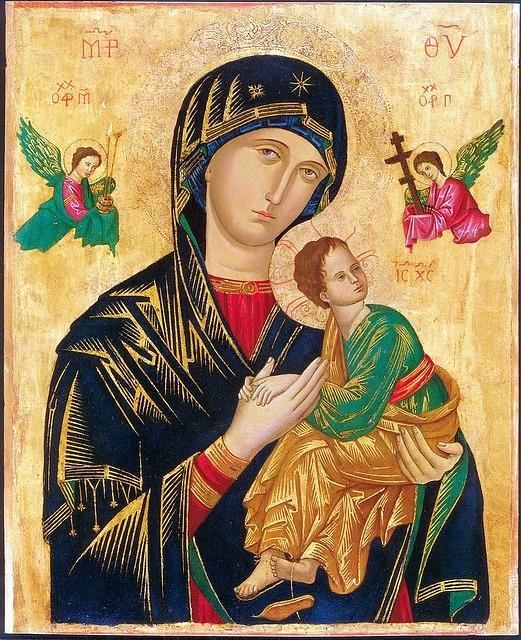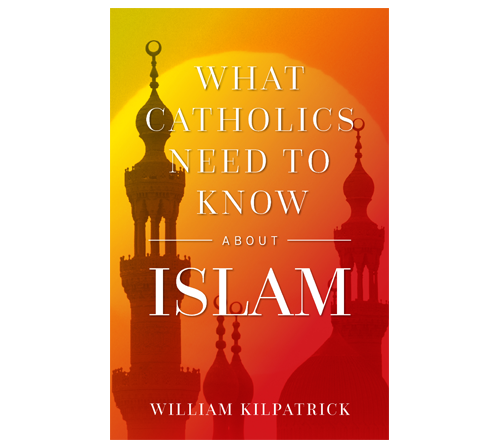Pope Francis says don’t worry about sin. Our Lady says otherwise.
Catholics are confused and divided over Pope Francis. For years he has been introducing novel changes into the Church that seem to conflict not only with traditional practices but also with established Church teaching.
An increasing number of Catholics have come to the conclusion that Francis (along with others in the hierarchy) is in the process of creating an alternate Church—one which is meant to eventually replace the true Church.
Defenders of Francis say that he is only trying to reform the Church—to renovate an aging structure that is badly in need of repair. By contrast, critics say he is trying to destroy the Church, with the aim of building a new Church based on humanistic principles in its place. They claim that although Francis and his supporters portray the changes as natural developments of Church teaching, they are, in fact, a radical rejection of Church teaching.
According to this view (which I largely share), what we have, in effect, is two Churches sharing the same space. However, although the progressive faction seeks to overthrow the Church of the Ages, it is useful to them to maintain the illusion that it is the same Church—until the transformation is complete.
As theologian Thomas Weinandy, OFM, Cap. put it:
What the Church will end up with, then, is a pope who is the pope of the Catholic Church and, simultaneously, the de facto leader, for all practical purposes, of a schismatic church. Because he is the head of both, the appearance of one church remains, while in fact there are two.
The question is, how can one tell the imposter Church from the Church established by Christ?
Although there are several indicators, the main giveaway, I believe, can be found in differing attitudes toward sin. The true Church takes sin very seriously and warns about it constantly. Indeed, the main mission of the Church is to save us from our sins. On the other hand, one of the main goals of the Church which Francis and his followers are building is to diminish the importance of sin.
On several occasions, Francis has belittled sexual sins, referring to them as the “lightest of sins” or jokingly as “sins below the waist.” He reportedly told a group of Spanish seminarians that they must absolve all sins in the confessional, even if there is no sign of repentance. On one occasion, when asked about the exploits of a homosexual priest, Francis replied, “Who am I to judge?” But—with the exception of sins against the environment and “sins” of rigidity—he seems to take a “Who-am-I-to-judge” attitude toward almost all sins.
Although Francis has condemned abortion on several occasions, he has also sent different signals on the subject on numerous other occasions. When Archbishop Salvatore Cordileone of San Francisco prohibited Nancy Pelosi from receiving Communion because of her strident support of abortion, Francis quickly signaled his disapproval of Cordileone. Not long after the archbishop announced the ban, Pelosi traveled to Rome, received Communion at the altar in St. Peter’s Basilica, and was warmly greeted by Francis on the occasion.
On several occasions, Francis has said that procuring an abortion is “like hiring a hit man.” If so, why does he make a point of warmly greeting one of the world’s chief hit men? And why, when he gets the opportunity, does he punish Cordileone by elevating Archbishop Robert McElroy of San Diego to the office of cardinal when the position would customarily have gone to Cordileone? McElroy, by the way, is known to be rather lax on the issue of abortion.
So, on the one hand, Francis says that abortion is a serious sin. On the other hand, he acts as though it’s not very serious. That, of course, is quite confusing. And deliberately confusing others about right and wrong is a sin in itself.
It’s called scandal. As the Catechism puts it, “scandal is a grave offense if by deed or omission another is deliberately led into a grave offense” (2284).
As applied to abortion, this means that one who downplays the gravity of abortion is partly responsible for the sin of another whose decision to have an abortion is based on the first person’s diminishment of the seriousness of the sin.
The Catechism goes on to say: “Scandal is grave when given by those who by nature or office are obliged to teach and educate others” (2285).
It seems particularly scandalous for Francis and many other prelates to de-emphasize the gravity of sin at a point in time when consciousness of sin is already at a low ebb among Catholics in Western societies. Numerous polls have shown that a majority of American Catholics now approve of behaviors that, according to Church teaching, are inherently sinful.
The irony is that Francis’ goal of easing our consciences has already been largely accomplished. What is needed now is a better understanding of the reality and gravity of our sin—the harm we do to ourselves and the harm we do to others.
Which brings to mind a purported but not yet approved Marian apparition from sixty years ago which is gaining increased attention. Between July 1961 and November 1965, in the small Spanish town of Garabandal, four girls, ages 11 to 12, allegedly received visitations from the Virgin Mary on numerous occasions.
The authenticity of the apparitions has not yet been confirmed by the Church, but the content of the message conveyed to the girls is in line with approved Marian apparitions such as Fatima. In addition, the message seems even more timely today than it did during the sexual revolution of the 1960s. In short, the message the children received was almost the exact opposite of the one which is now being promulgated by Francis and the cardinals and bishops who align with him. The children were not told to take a more relaxed attitude toward sin. Instead, they were told that the day was coming when all people would justly feel far more guilty about their sins.
The Blessed Virgin predicted that a day would come when each person on the planet, whether a believer or an unbeliever, would simultaneously receive an intense personal revelation of their sins. According to the testimony of the girls, each person would see the gravity of his or her sins—not only the sins that they committed but also the good they could have done but didn’t. They further testified that for most people it would be a frightening experience because we would see our souls as God sees them.
At the same time, the Warning will be experienced as a great blessing—a chance to see the consequences of our sins, to ask forgiveness for them, and to amend our lives.
The Warning does seem to be exactly the right medicine for our permissive times and also the proper antidote for the “sin-is-no-big-deal” message now being promoted by the Vatican and the Synod.
In this regard, it’s worth noting that Mary’s message to the children at Fatima also emphasizes the gravity of sin—particularly sexual sins. As Catholic journalist Thom Nickels points out in a recent article,
The Fatima message…contains a clause stating that most people who go to hell go there because of the sins of the flesh, the opposite of what Francis recently suggested while visiting his Jesuit friends in Portugal, where he commented that too much attention is paid to “sins below the waist.”
In our highly permissive era, Mary’s words may seem harsh, but they also seem more realistic than Francis’ offhand dismissal of sexual sins. It stands to reason that most people in Hell go there because of sins of the flesh. It’s not that sexual sins are more serious than other sins. It’s that temptations to sexual sins are far more frequent than other temptations that might lead to Hell, such as temptations to kidnapping, treason, torture, murder, and the like.
In any event, it seems more prudent to listen to the Mother of God than to put your trust in Francis. The appearance of Mary in Fatima in 1917 is perhaps the best authenticated Marian apparition. In addition to the Church’s approval, the Miracle of the Sun that Mary predicted was witnessed by 70,000 people—including a number of atheists and agnostics who came to mock but went home as believers.
Mary’s message of repentance or Francis’ advice to go easy on yourself? Which seems more in line with the message of the Gospel?
This article originally appeared in the September 14, 2023 edition of Crisis.
Pictured above: Madonna and Child
Picture credit: Pixabay


